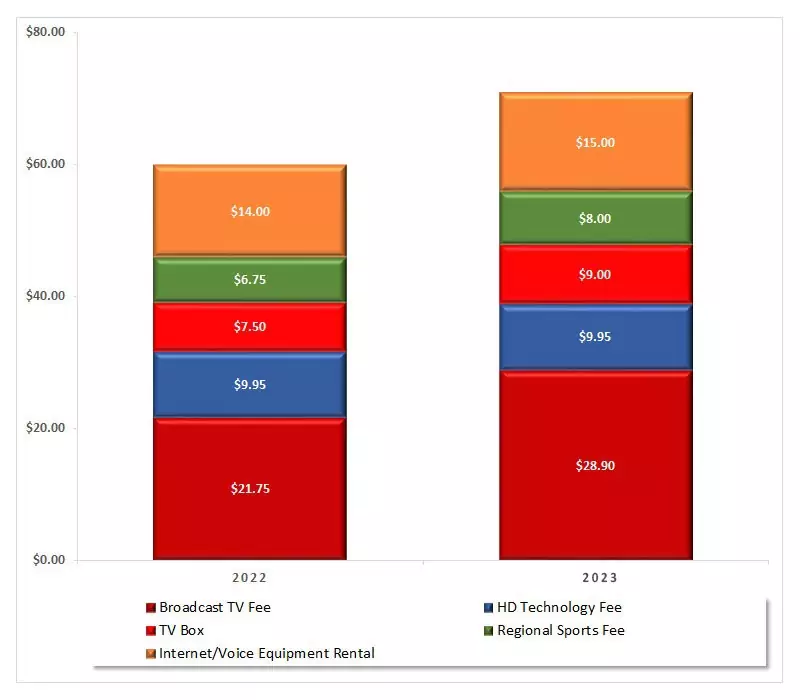What are Retransmission Broadcast TV Fees?
In order to make the best decision for your home or community when it comes to TV access, its important to understand the single biggest influence on subscription TV pricing: retransmission consent.
Simply put, Retransmission Consent (retrans fees), as laid out in the Cable Television Consumer Protection and Competition Act of 1992, means that cable, satellite, and streaming companies like YouTubeTV and Hulu Live must pay national and local affiliate broadcasters (ABC, CBS, NBC, FOX, etc) for the rights to “re-transmit” their popular channels and programming.
But here is the catch: the FCC, in exchange for RF spectrum rights, that ABC, CBS, NBC, and FOX must make their digital signals freely available Over-the-Air (OTA) to anyone who installs an antenna or master antenna for multi-family. Its the law.
Who Pays for Free Stuff?
So why would people pay $28.90 every month for something that they can already get for free? That is the multi-billion dollar question that we answer in depth in our white paper. Keep in mind, as of 2023, XFinity Comcast charges nearly $30 per month to access the content provided for free by the major broadcasters (NFL, Local News, etc). In 2022, US consumers paid over $13B in retransmission consent (broadcast TV fees)…for TV that can be had legally, for free.

The first reason people pay for free is reception: prior to 2009, OTA signals were not digital so could not carry HD broadcasts. Cable and satellite could deliver HD while OTA could not. Also, prior to 2009, signals were far less reliable.
The second reason people pay for free is a lack of basic technical skills. Setting up an OTA antenna that reliably serves all TVs in a building requires special tools and skilled labor.
So, while free TV is all around us in the airwaves, most people think of TV antennas as old technology that can only deliver fuzzy images. Since 2009, nothing has been further from the truth. StreamWise Solutions has over 15,000 residents and tenants enjoying crystal clear broadcasts for free.
Who Makes Money?
For decades, this retransmission of existing “free” signals in a cable or satellite package made a lot of money for broadcasters and distributors. The broadcasters could make money from advertising and retransmission fees and the distributors could charge more every year.
When the broadcasters and distributors disagreed about retransmission consent pricing, channel blackouts would occur. (One of the many benefits of OTA is no channel or content blackouts.)
This cozy arrangement was the status quo until 2009. In 2009, the FCC mandated that all TV broadcasters must provide their broadcasts in digital signals capable of carrying HD programming (ATSC 1.0). This innovation, combined with the advent of YouTube and Netflix running on high speed internet, changed the video entertainment landscape forever. Consumers could now easily source their video entertainment from outside the established cable satellite duopoly.
In 2023 consumers, via streaming, can get all manner of content for free or for low monthly subscription costs. But they cannot get the major broadcasters for free unless they utilize OTA. All broadcasts from the major networks (ABC, CBS, NBC, FOX) must either be had for free via OTA or are subject to retransmission fees.
Case Study: YouTubeTV’s Broadcast Fees
The best way to demonstrate how this works is to take a look at Google’s subscription cable package substitute, YouTubeTV. When YouTubeTV first arrived on the market just a few short years ago, it cost $35 per month. Less than four years later, a subscription costs $72.99 per month. Why? Because when it first came out it did not have the major broadcasters packaged in. Originally, there were no retransmission consent fees passed onto the consumers because YouTubeTV did not carry ABC, CBS, NBC, and FOX. Once YouTubeTV figured out that they could sell more subscriptions if they included local TV, they decided to pony up and pay retrans fees.

